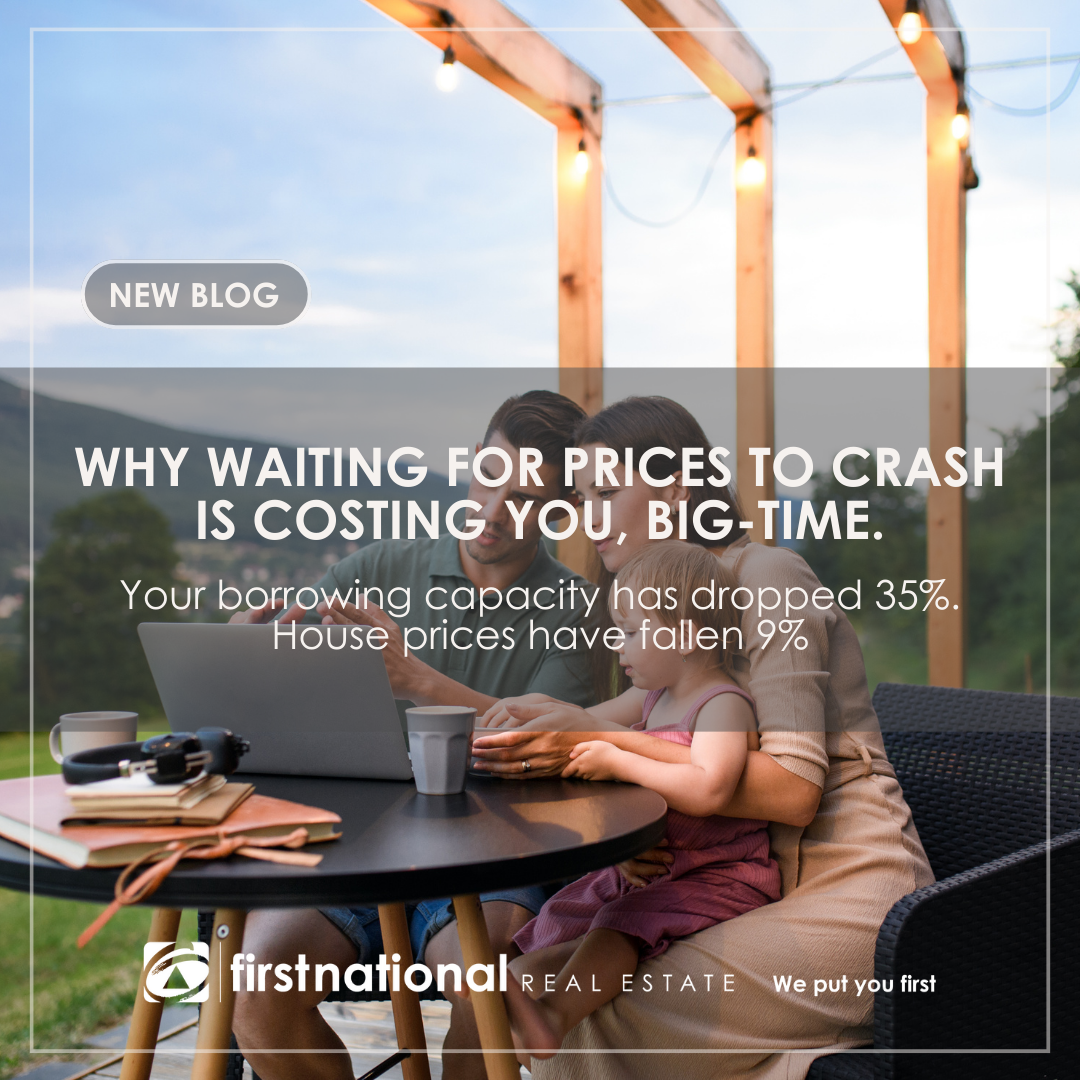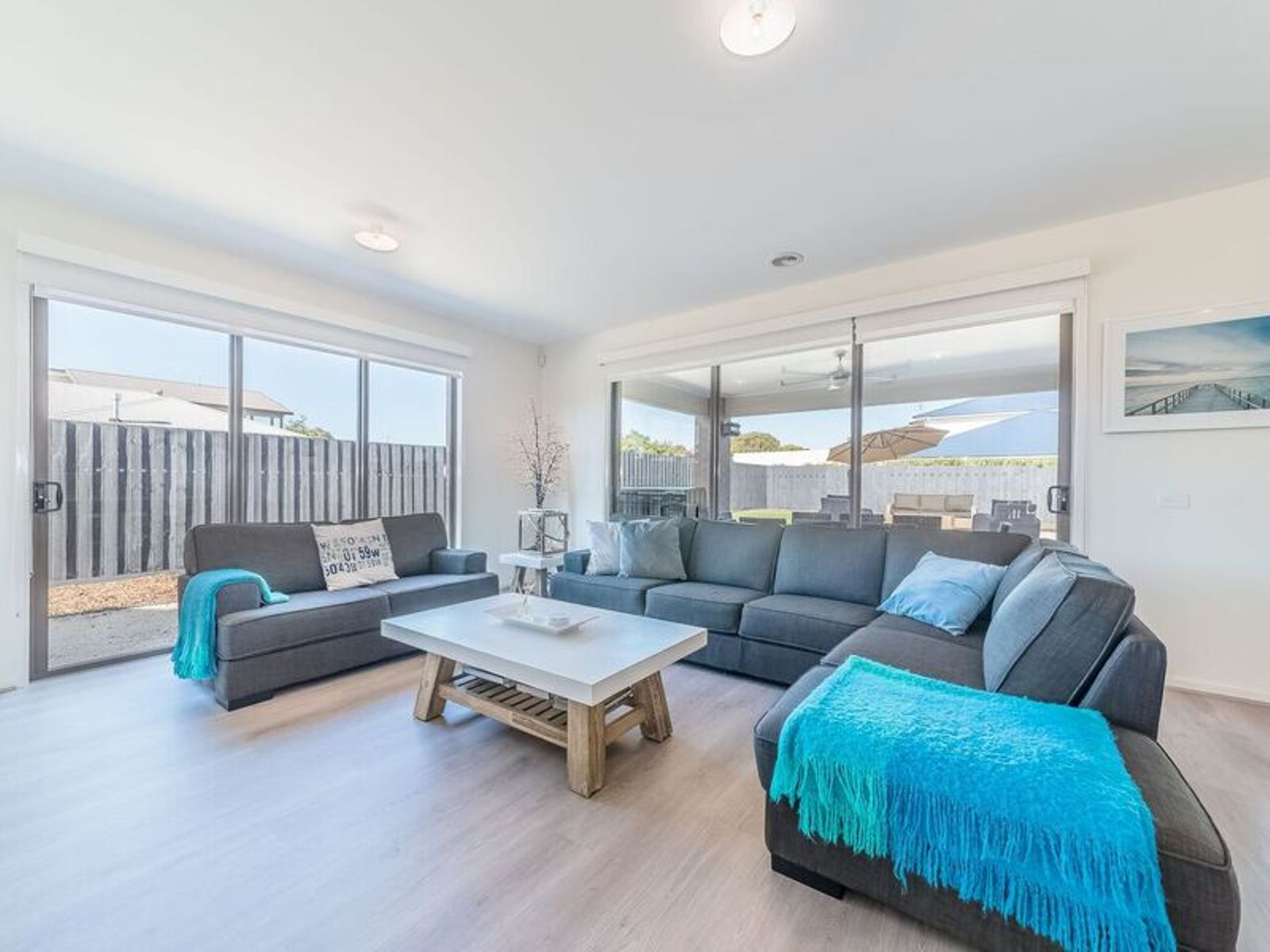Everybody wants to buy at the bottom of the market. We get it, but how many people actually do?
If you're saving to buy your first home and hoping rising interest rates are going to lead to a 20% crash in house prices, as some banks have forecast, you could be in for a major disappointment.
Aside from the fact that values have actually risen in Sydney, Melbourne and Perth over the past four weeks, the Reserve Bank of Australia's tenth interest rate hike has reduced your borrowing capacity by perhaps as much as 35% over the past 12 months. That contrasts with a cumulative drop in house prices from the peak in mid-2022 of around 9%.
While we freely concede that the most recent four weeks of data does not constitute proof that the market has reached the bottom of its cycle, First National Real Estate has been observing a slowing in the rate of falling prices, month after month, since October last year. In our experience, that means we're nearing the bottom of the house price curve and you don't need to be a genius to work out what happens next.
With Sydney considered the bellwether for Australia's residential market and Sydney and Melbourne's houses together comprising over 50% of all houses traded in the country, what happens in Sydney usually soon follows in Melbourne.
So, with Sydney delivering its first monthly lift in prices since January 2022, up 0.8% in February despite the RBA hiking rates another 25 basis points, plus Melbourne and Perth rising incrementally (+0.2% & +0.1% respectively), and the RBA's March minutes indicating a possible pause to rising interest rates come April, the ingredients are coalescing for the market to return to a growth cycle soon.
In all likelihood, this will become very clear over the next three to six months so you can expect First Home buyers to flood back into the market, come spring.
By the way, after falling every month since last August, Brisbane home values remain unchanged over the past four week period and Adelaide is now the weakest of our capital cities, with values there down -0.4% (after a long and very resilient upward run).
Stop thinking like a 'First Home Buyer' to become a 'Homeowner'
Taking the above into account, if you want to be 'homeowner' it could be time to stop thinking like a 'first home buyer'. That means it's time to shift your focus from waiting for prices to bottom to actually getting a foot on the rung of the property ladder. Here's why...
Typically, our agents find that homeowner and buyer sentiment is about three to six months behind the reality experienced in the marketplace. Housing data reported in the media is already historic by the time you read it and it always takes consumer sentiment several months to catch up, when the market shifts.
So, by the time you realise the market has bottomed, it actually did that a few months back. You know that other truism - 'the best time to buy real estate was 20 years ago'? Need we elaborate?
So, as we said earlier, the crunch about waiting for prices to fall further in this interest rates environment is that your borrowing capacity is falling faster than house prices, and, once the market pendulum swings, your buying capacity will shrink further still. And while you might expect prices to fall another 5 to 10%, we're just not seeing that happening.
With each successive interest increase of 0.5%, economists calculate your borrowing capacity is cut by 5%. So, if you were able to borrow $500,000 a year ago, that's now been reduced to $325,000. Ouch! Waiting has cost you $175,000 in purchasing power. In the meantime, that $500,000 house you had your eye on is now for sale for $455,000, but the bank says that's out of your range.
What factors are now in play?
Pricing of homes in more affordable price ranges, such as below $1,200,000, has just about stabilised through most markets in Australia.
The RBA is indicating it may pause its interest rate increases in April and, while that doesn't mean there may not still be some further increases before inflation is brought within the RBA's desired range, most homeowners and home buyers are looking for just such a signal before committing to buying or selling. Then we're on the cusp of heading into winter, when fewer homes are for sale. By the time spring arrives, Australians will have a fairly clear idea of the RBAs intentions and they'll have built a buffer into their mortgage calculations. So, with confidence strengthening, the market could be primed for a strong resurgence of both listings and buyers.
The recent fall in bond markets yields may also contribute to downward pressure on interest rates. That's just one reason why banks such as NAB are now talking of US rate cuts before the end of the calendar year, and the RBA is considered likely to follow.
However, many of the RBA's most recent interest rate increases have yet to take full effect and cost-of-living pressures have been mounting for some time. So, while some parts of the market may have already bottomed, you can expect to see some considerable variance around Australia's capitals and regions for different types of homes.
Then there's the COVID pandemic market impacts to consider, both on the average number of people living in homes and the number of foreigners moving to Australia.
Self-storage units and the coming wave of demand
The COVID pandemic led to a reduction in the number of people living in the average Australian home, with a nationwide desire to live in smaller households exacerbating the rental supply crisis, and a storage unit crisis.
With fewer people living in each rental property and a considerable share of landlords selling their rental properties to first home buyers, our ever-diminishing pool of available rentals have become much more expensive. The solution for many has been to move back home and live with parents, but what happens to their belongings?
There's a direct link to pent-up demand for property and storage units, with many self-storage companies consequently reporting they're running at capacity for the first time in a decade.
In some cases, this is the effect of growing families running out of space and not being able to secure a larger property. In other cases, it's renovators and downsizers - typically 'empty nesters' - selling the family home. Mostly though, it's the problem mentioned above; people struggling to find affordable rental accommodation and moving back to Hotel Mum and Dad. In Western Australia, for example, 100,000 adults are living in the family home, a 30% increase on the number doing so a decade ago.
Nationally, live at home adults - the 'Boomerang Generation' - numbered 456,546 in the 2021 Census. That's up almost 17% since the 2016 survey and doesn't take into account the impact of rental homes that departed the market as large numbers of tenants moved out of cities and bought their first homes in regional Australia in 2022/23.
In Victoria, there's been an unprecedented uptick of first home buyers aged 40-plus. The State Revenue Office says hundreds of first home buyers in their 60s accessed government support in the past year, and thousands were aged over 50. This is not an isolated statistic because the proportion of buyers aged 40 and above grabbing a stamp duty exemption has risen from 13.6% five years ago, to 16.5% last year.
Australia is also on track for a 2023 migration boom as arrivals dwarf Treasury forecasts. Based on the current trajectory, more than 300,000 people are expected to arrive in the country this year - 25% more than originally anticipated. They all need to find homes and while most of this demand will likely flow to into rentals, we may see a higher than normal portion of long-term migrants choosing to buy rather than rent.
Better sooner than later, or never...
So, if you're waiting for a better deal on your purchase price, or for interest rates to start falling, you're probably making a big mistake.
There are a large pool of buyers employing this strategy and when they re-enter the market, ground zero for competition will be in a very tight price range - somewhere between $450,000 and $550,000 for most. The average loan in Australia is $431,525, which implies a deposit of $107,881 and a purchase price of around $531,406.
This is where the fundamental laws that drive real estate prices are very simple to understand - the ratio of supply to demand dictates price, and confidence underpins the degree of demand. When interest rates pause or start falling, and house prices have stabilised or started to rise again, which will become clear over the next few months, you will almost hear the crack of the starting gun. Australians will return to the property market with alacrity.
Homeowners generally avoid selling on a falling market, even though they're under much less pressure to buy their next home while prices are falling. That's why listings have been running at around 23% less than the five-year average of late.
The Australian property market functions normally when approximately 250,000 properties are for sale nationally. At the time of writing this article, around 192,000 properties were listed for sale. This shows just how many homeowners are waiting for the right signals before enacting their plans for change.
With widely distributed workforces and work-from-home scenarios now commonplace as a result of the COVID pandemic, we've already witnessed how dramatically Australia's taste for where we live and work can change. There have been large outflows from our cities to the regions, gobbling up affordable and premium-priced housing stock, and the construction sector simply can't keep up.
All that is required now is for confidence to be normalise before we see a substantial increase in demand across all price ranges.
No time like the present
With the Reserve Bank of Australia's 10th interest rate hike, borrowing capacity has decreased by 35% over the past year. As we have shown, waiting for house prices to drop further could be a costly choice as the pendulum swings towards growth, so the best time to buy is now.
If you're ready to take the plunge into property ownership, make sure you take advantage of every available dollar and cent of government assistance available by exploring our First Home Buyer Financial Assistance guide. It's free and we won't ask for your email address!




